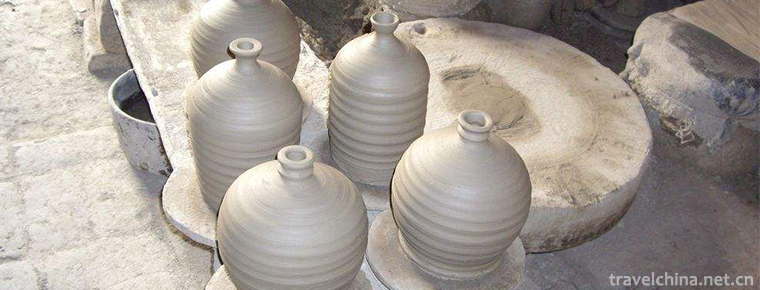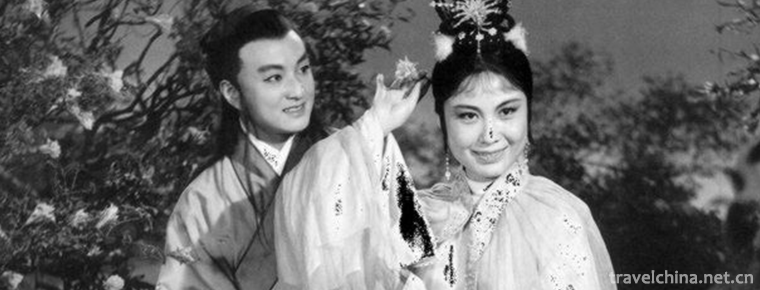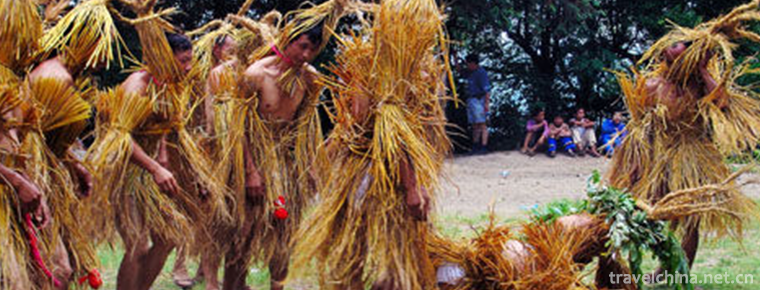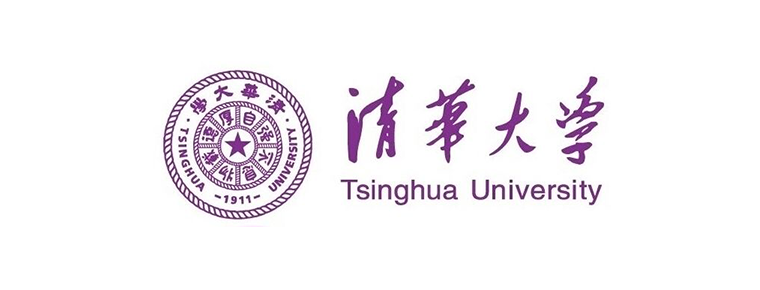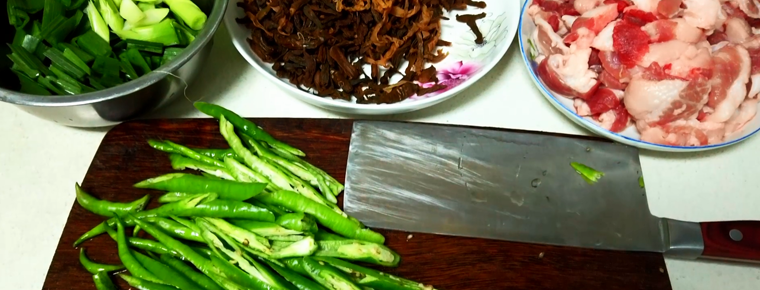Congratulations
Congratulations
Congratulations, also eulogies, Mongolian folk literature form, China's national intangible cultural heritage. Praise is a traditional folk literature form of Mongolian nomadic people in northern China. It is a free poem with a certain rhyme, natural language fluency and interest. Congratulations and compliments are collectively called "congratulations".
historical origin
Congratulations originated from labor and were written orally by Mongolian hunters and herdsmen.
Congratulations accompanied the Mongolian people through the long river of time. It is the need of Mongolian social life to show its tenacious vitality. From the folk oral creation of ancient Shaman scriptures and heroic epics, congratulations and eulogies originated from labor and were collective oral creation of hunters and herdsmen. After the emergence of primitive religion - Shamanism, the Wizards (called "Bo" in Mongolian) borrowed these ancient ballads or adapted them to turn the congratulations into various ritual songs of Shamanism. Ancient congratulations are mostly praises of heaven, earth, mountains and rivers, natural things, and prayers for the production of fishing, hunting and animal husbandry. Later, due to the development of social production and the emergence of independent agricultural economic departments, nature was gradually recognized. Folk congratulations and praises gradually eliminated the color of primitive religion of ancient congratulations, and replaced it with a direct description of labor production and a warm praise of labor results. But the most wonderful and numerous compliments are those that praise everyday life. From the festival "Nadam" Congress to the wedding ceremony, from the hometown of mountains and rivers to five kinds of livestock and daily appliances and decorations, there are corresponding works to give warm congratulations and praise.
primary coverage
Congratulations and compliments are the unique literary and artistic forms of the Mongolian people. When livestock breed, felt wrap is finished, newlyweds marry and babies are born, the "Hunjin" (a good speaker of words) that is like a river, will bless and offer auspicious poems to people. At a delightful banquet, the hospitable host should first recite the warm toast and persuade the guests to drink. This kind of greetings and praises, which are full of grassland flavor and appear in the form of recitation poems, have been circulated among Mongolian people since ancient times.
Most of the congratulations and compliments are sung on solemn occasions or festive ceremonies, so they are colorful, sincere, emotional and intense. It is different from the common folk songs in form of expression and language style. Folk songs are mostly composed of four lines and one section, overlapping and repeating, while the congratulations and compliments are completed at one go, regardless of length. Folk songs and poems require rhyme and neat sentences. Compliments do not necessarily pay attention to strict rhythm, mainly in pursuit of the natural melody of spoken language, catchy, stretching and fluent, is a free poem with a certain set and reciting tunes. Ancient congratulations and eulogies are mostly praises of heaven, earth, mountains and rivers, natural things, and prayers for the production of fishing, hunting and animal husbandry. Congratulations and compliments are Mongolian traditional folk literature forms, which are free poems with a certain melody, natural language fluency and interest. Congratulations were first evolved from Shaman sacrifices, chanted by specific people in a specific environment, through specific etiquette and customs.
Congratulations
The origin of the congratulations is closely related to various folk customs and habits as well as production and life phenomena. Zhu Ci is a long-poem folk literature genre that expresses various customs, production and life phenomena and wishes for a better future. In Festival banquet occasions, the Mongolian people are always indispensable to recite congratulations by elders or special singers, known as "Hujin" or "He Le Mozhi" (referring to those who are good at rhetoric) in order to increase the festival atmosphere. According to its content, congratulations can be divided into congratulations related to herdsmen's production, such as "felting congratulations" and "yurt congratulations"; congratulations related to herdsmen's living habits, such as "fire worship congratulations"; congratulations related to life etiquette, such as "baby birth congratulations", "new person congratulations"; congratulations related to competitive entertainment. Such as "entertainment congratulations", "three sports congratulations" and so on. The congratulatory speech consists of three parts: the beginning, the main body and the end. When singing, the chanter often explains the reason why he sings the congratulations at the beginning, that is, the chanter should explain that he sings the congratulations with the wishes of everyone, then give a true description and praise to the things he wants to bless, and finally express his wishes for the future at the end.
The central content of the congratulations is to describe the things and events that are wished and the scenes that change in chronological order. For example, "fire worship":
Hanggaihan Mountain is only when the hills are big.
When the ocean is big and the water is low,
Khan burns with flint.
The Queen blows her lips.
With flint as mother,
Father of the sickle,
—— The Holy Virgin of Fire who invented fire!
We offer you a mellow dairy wine.
We offer you delicious meat.
Pray for the greatest blessings.
Let us live forever in this happiness.
Expressing good wishes, praying for good fortune, wealth and longevity, often in the form of poems at the end, is the common feature of all the congratulations. For a short message, it can be called a blessing. The Mongolian blessings can be chanted by the elders on any occasion. They are mainly good wishes for people, things and things.
Blessing speech is an ancient and long-standing folk literature form created to pray for the beauty of all things. It is the product of people's belief in the age of language magic. It is sung by elders or professional chanters during festivals or collective harvest of labor achievements, in order to pray for blessings of prosperity of Ding and peace of livestock.
Eulogy
A magnificent and beautiful compliment is the embodiment of Mongolian people's heroic emotion and aesthetic taste. Praise is characterized by praising all good things and giving full praise from different perspectives. In praise of the horse, he said:
Its long, flowing light mane,
Like a glittering umbrella spinning in the wind;
Its shining eyes,
It's like fish playing in the water.
Its broad and comfortable chest,
Like the dew in the sky dripping with the vase;
Its clever and sensitive ears,
Like lotus petals blooming on the top of a hill;
The horse has eight auspicious emblems.
It is undoubtedly a BMW that is unparalleled in the world.
Although both compliments and congratulations contain the ingredients of praise for things, they are wishes for the future of things. The main compliments are to praise scenery, such as mountains and rivers in their hometown, new houses, fruits of hard work, excellent horses, gifts and so on. That is to say, to praise everything of things. Good forms can be praised and praised.
Praise is also one of the folk oral literary forms created by Mongolian working people in their long work, which was integrated into various customs and ceremonies earlier. People believe that such praise can stimulate the vitality of things and enhance ambition. The early praise is not only a literary form of expressing emotions and aesthetic tastes of the working people, but also a way of pleasing the gods through gorgeous sentences in order to hope for God's blessings and gifts, which is the real origin and early function of the praise. People do not understand the natural changes and cannot grasp the laws of nature, so they believe that language can move the gods. With the development of social history, the objects praised by the eulogies are more extensive, involving all aspects of Mongolian social life. According to the content, praise can be roughly divided into three categories: custom praise, scenery praise and livelihood praise. Each kind of praise has its specific singing occasion, and the special singer carries on the comprehensive praise to the praise object. Such as "Horse Racing Song", from the shape of the horse to every detail of the whole race, as well as the preparation of the horse's owner before the race, will be described and praised in detail.
Praise is a type of folk oral literature, so the singer does not stick to fixed sentences, but according to the scene to play their talents, improvised recitation. Therefore, praise is not only a collective creation, but also reflects the wisdom of the singer and his artistic expression ability.
With the change of the times, the content of blessing and praise, as treasure of Mongolian oral literature, has become more colorful. From the previous form of merging only in production and life rituals, it has gradually tended to coexist and develop in stage art and real life, and has become the traditional Mongolian language. A model of art.
There are not many studies on the whole of Mongolian compliments. Among them, Mr. Zhao Yongmian has made a detailed exposition in the relevant chapters of the History of Mongolian Literature. This paper mainly refers to his research and introduces the compliments.
Mongolian compliments have a long history, rich contents and various names. They cover almost all aspects of Mongolian social life, ranging from hunting, animal husbandry, agriculture to weddings, Nadam, sacrificial rituals and so on. Among Mongolians, all the more important links or moments of life or society must be held. The ceremony was solemnly and warmly congratulated.
Contrast
There are not only close connections but also some subtle differences between the congratulations and the compliments.
The congratulations are oral hymns to gods and ancestors, including sacrifices to gods, earth gods, mountain gods, hebo, fire gods, hunting gods and animal protection gods, or praises to heroes and winners, or blessings to the younger generation from the elderly and the elderly.
Praise mainly praises the scenery, which is full of people's feelings of joy and appreciation for all the good things and the results of their own labor. For example, we should praise the mountains and rivers in our hometown, the newly built houses, the excellent horses and even the gifts given to each other.
Congratulations and compliments differ in form because of different objects of congratulations. But there is no lack of praise in the congratulations, which also contain the congratulations, so the congratulations and the compliments are inextricably intertwined.
artistic characteristics
As literary works, congratulations and compliments have their own artistic characteristics: most of them are improvised oral hymns. Most of the congratulations and compliments use metaphor, concise language, natural fluency, rhyme and vivid image. Congratulations and compliments are different from general folk songs. Some of them are in the form of overlapping and repetition, but some of them are fluent and fluent. Folk songs are to be sung, congratulations and praises are to be recited, so we should pay special attention to rhythmic opposition, cadence and setbacks.
Main species
Sacrifice words
In terms of sacrificial words, Golden Palace sacrificial words is the most famous. It is a collection of sacrificial words, prayers, greetings, congratulations, lyrics and copies of sacrificial rites for Genghis Khan. The Golden Palace Sacrifice is written in gold letters on magnetic blue paper. It is generally called the Golden Book. It has always been preserved in Genghis Khan's mausoleum. It is the epitome of ancient customs and customs.
Wedding compliments
Of all the congratulations, wedding congratulations are the most warm and solemn. Its chanting accompanies every step of the wedding ceremony, foil with gorgeous rhetoric, the atmosphere is festive, warm and strong. In urban Mongolian weddings, the habit of reciting compliments is retained, but the content and form are simpler, mainly to praise the appearance of the bride and groom. Generally, people who speak Mongolian fluently and standard are invited to recite, and some wedding hosts recite. The traditional Mongolian wedding ceremony is solemn in form, warm in atmosphere, various ceremonies, lasting for a long time, sometimes for several days or even months. The whole process of marriage involves courtship, engagement, gift-giving, repayment of mother's milk, marriage, closed-door welcoming of son-in-law, first offering of sheep, asking for fame and geng, kowtow of son-in-law, dressing up of girl, bride on horse, on-the-way welcoming relatives, bride sacrifice to fire, all-night feast, gift-giving, and in some places, closed-door welcoming of bride and worship. The etiquette of heaven, earth, sun and moon. These rituals are different from place to place, so they can be divided into Ordos, Horqin, Bahrain, Urat, Zheng of Mongolia, Baltic Tiger, Kulun, Chahar, Abahanar, Sunite, Dalhan, Alashan, Weilat Wedding and so on. In this process, each ceremony has its own compliments, so there are many names of these compliments, too many to enumerate. There are mainly "explanations of white gifts", "explanations of amber white bottles", "explanations of steeds chasing wolves", "explanations of stone-splitting knives", "explanations of seventy-two gold Python jackets", "first name inquiry", "second ceremony", "eulogy of greeting relatives", "fire blessing", "bow and arrow congratulations", "fire worship speech of daughter-in-law", "picture". Laga's congratulations, gifts, Hada's congratulations, Newbuki's congratulations, bride's congratulations, bride's kowtowing congratulations, bridegroom's congratulations, curtain's congratulations, account-solving congratulations, bride's congratulations, etc. One of them, "Tian Jianzan" said: "From the fate of eternal life, each sweat Lord carefully followed, become the eternal aspiration of future generations, dedicated to bravery and loyalty. Above the white arrow with carved feathers, write and chant an additional arrow, wishing the newlyweds harmony and health and peace in peace forever! ___________
Comments on Aobao
When offering sacrifices to Aobao, people should dress up and ride their beloved steeds from all directions to Aobao. They should circle Aobao three times clockwise and add the stones they bring to Aobao. After the square incense case in front of Aobao or the worship of Buddha's niche, Aobao will be decorated with Hada, ribbon and Luma flag. There will be life immediately. Then on the sacrificial ceremony in front of Obo, tribute gifts were placed. Tributes are voluntary and can be delivered to sheep, brick tea, coins and other items. Grassland herdsmen generally offer sheep, fresh milk, Hada, cheese, butter, holy cakes, liquor, porridge, brick tea and other items. Then the Lama recited the Sutra of No Scale to make these foods more holy, and began to light cypress incense and make smoke sacrifices. At this time cymbals, horns, bells and pilgrims, regardless of monk's or vulgar dignity, spread their hearts on the ground and prayed to Obao for "smooth weather, rapid increase of five animals, disease-free and disaster-free". Teng ", and then scattered mare's milk, alcohol wine, cypress branches on Obo, recited"Obo sacrifices to God","God"is a compliment. Then the crowd gathered and circled clockwise three times around Obo.
Agricultural compliments
Agricultural congratulations appeared only in modern times. There were "Bansheng congratulations", "Shangliang congratulations" and "Dagu Yard congratulations" chanted when building houses. In addition, there are congratulations on long-distance trafficking, such as the "foot-pulling message", "humpback praise", "Le Che Zan" and so on. In terms of custom and etiquette, the congratulations include "New Year's Message", which includes congratulations to men, children, women, singers, etc., while baby congratulations include "Baptism Message", "Cradle Message", "Hair Cutting Message" and so on. In his blessing to the man, he chanted, "May your crops be prosperous in the year, your herds be strong, your herds are full of pastures, and your grain is full of warehouses." Agricultural praise is characterized by a true reflection of real life.
Comments from Nadam
Nadamu is a cultural life style of Mongolians and a festival for all Mongolians. Its contents include wrestling, archery and horse riding. It can be large or small in scale and lasts for a long or short time. It is usually held on the grassland in July or August when the water and grass are rich and beautiful. Nadamu's congratulations consist of "Bok's praise" ("Admission praise", "Honour praise", "boot wrestling praise"), "Ma Zan", "bow and arrow praise", "Archer's congratulations". "Bok Praise" is a comprehensive praise of excellent wrestlers from different perspectives, such as body, strength, skill, intelligence and morality. One "Bok Praise" praises Bok's strength: "Bok who can carry mountains under his armpit and has a broad chest. Bok, who can empty the Yellow River and has strong perseverance. "Mazan" is associated with the title of ranking in horse racing. From champion to ninth place, there are their own unique "Mazan". Among them, the content of "Shouma Zan" is to introduce the origin and growth of the horse, to explain the appearance of the horse, to emphasize the momentum of the horse, to depict the attitude of the horse, to depict the dress of the horse, and to praise and bless the rider. "Bow and arrow praise" is basically the same as the bow and arrow congratulations in the previous wedding congratulations.
Comments on Animal Husbandry
The main congratulations on animal husbandry are "Words of offering wine to sheep", "Words of offering wine to mares", "Words of offering wine to foals of mares", "Words of offering wine to sheep", "Words of offering wine to mares" and "Words of offering wine to mares".
"The Word of Calf Festival for Wine" and the compliments related to production activities, such as "the Speech of Scapula", "the Speech of Atlas", "the Speech of Shaga Zan", "the Speech of Felt", "the Speech of saddle", "the Speech of Ma Nu", "the Speech of Mongolian Chess", "the Speech of Milaga", "the Commentary of Twelve Genus", and so on. When the ewe gave birth to the first lamb of that year, the shepherd must put fresh milk on its head and bless him with the following words: "I wish you a pioneer of thousands of sheep, and I wish you a leader of thousands of sheep." Generally speaking, there are many gods to be worshipped in these sacrifices, such as mountains, rivers and the earth. We hope that they can avoid human plagues, deaths, thieves, black disasters, white disasters and so on, so that livestock can thrive. At the end of the sacrifices, we must bless people's safety and auspiciousness.
Hunting compliments
Hunting was one of the main ways of production in the early period of Mongolian people, so the early compliments were about hunting life. The more famous ones are "Call the Prey Storehouse", "Hunter Call the Fortune Storehouse", "Sacrifice to Manahantengri Rite", "Ganji Gacang", "Angen Storehouse" and so on.
Among them, "Ganji Gacang" is a written work handed down from ancient times. "Ganjiga" is Mongolian, meaning saddle rope. Generally, there are four or eight ropes on each side of the horse's back, which are used for prey or other items. Gamgiga's upper prey is more or less a sign of whether hunting is harvested. Nowadays, when people have a great harvest in their daily life, they also say "Ganji Gardu still" ("Du still" means "full"), while "Ganji Gardo" ("Haodao" means "empty") means that there is no harvest. "Cang" means "Song" here. In this work, Ganji Ga is vividly depicted with a lot of prey tied on it, expressing his ardent desire to succeed in hunting before hunting. For example, "tie the forked-horned ram to the front side, the vertical-eared fox to the opposite side, the white-billed ewe to the front side, and the curved-horned ram to the opposite side."

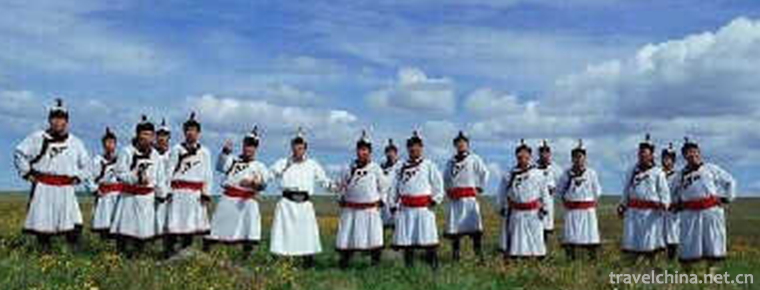
-
Jiangbulak Scenic Area
Jiangbulak Scenic Area is located in the low mountain belt 58 kilometers southeast of Qitai County, Xinjiang, China. It includes wide gully scenic area and Yangwatan beach.
Views: 143 Time 2019-01-21 -
Sintering Techniques of Chengcheng Yaotou Ceramics
Yaotou Ceramic Firing Skill in Chengcheng, a traditional handicraft in Yaotou Town, Chengcheng County, east of Guanzhong, Shaanxi Province, is one of the national intangible cultural heritages..
Views: 188 Time 2019-04-18 -
Legend of Cowherd and Weaver Girl
Niulang and Zhinu are one of the four Chinese folk love legends (the other three are Legends of White Snake, Meng Jiangnu Crying Great Wall, Liang Shanbo and Zhu Yingtai). They derive from the star na.
Views: 309 Time 2019-06-08 -
Wudang Shenju
Wudang Shenxi Opera is a kind of traditional opera in Xijiadian Town, Danjiangkou City, Hubei Province. It has a history of nearly 400 years since the Wang family absorbed Wudang culture and the music.
Views: 324 Time 2019-06-30 -
Maogus Dance of Tujia Nationality in Western Hunan
Maogus Dance of Tujia Nationality in Western Hunan Province, the traditional dance of Tujia and Miao Autonomous Prefecture in Western Hunan Province, is one of the national intangible cultural heritag.
Views: 175 Time 2019-07-06 -
Tsinghua University
The campus of Tsinghua University is situated in northwest Beijing on the site of the former imperial gardens of the Qing Dynasty, and surrounded by a number of historical sites..
Views: 185 Time 2019-08-31 -
Cai Lun
Cai Lun(?-121 years ) Zhong Zhong, a member of Guiyang County in Eastern Han Dynasty. Emperor Ming of Han Yongping entered the palace in the end, Zhang and two years (AD 88). Cai Lun was promoted to t.
Views: 290 Time 2019-09-06 -
Stir fried pork with salted vegetables
Stewed pork with dried plum is a famous traditional flavor dish in Shaoxing, Zhejiang Province. The main raw materials are dried plum and streaky pork. Dried vegetables absorb meat fat to remove astri.
Views: 460 Time 2020-03-18 -
Huanglian earth forest
Huanglian earth forest, namely the earth forest in huanglianguan Town, is a geomorphic landscape developed on a set of ice water freeze-thaw debris flow deposits. Huanglian earth forest is located in huanglianguan Town.
Views: 155 Time 2020-10-16 -
Guangyuan transportation
Guangyuan has been the transportation hub and material distribution center in the adjacent areas of Sichuan, Shaanxi and Gansu since ancient times. The reconstructed Guangyuan new railway station includes Baoji Chengdu double track railway and .
Views: 79 Time 2020-12-15 -
Dazhou folk culture
Dazhou yuanjiu Climbing Festival this tradition has been followed for thousands of years, every year on the ninth day of the first month, hundreds of thousands of people travel to the city, this spectacular scene is also rare in the country. It is said that i.
Views: 287 Time 2020-12-20


